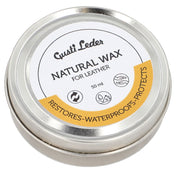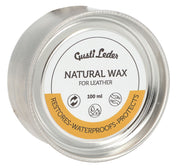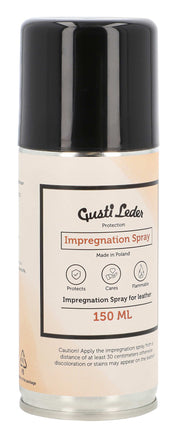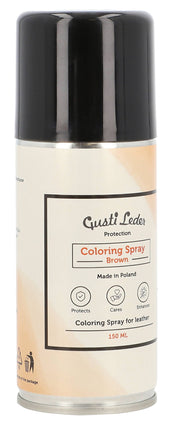First coloring through tanning
Tanning is the primary color factor in leather: depending on the tanning agent, whether natural or chemical, the color varies. Vegetable tanning (as in our Nature line) can produce various shades of brown. Chemical chrome tanning, for example, dyes the leather in shades of blue-gray.
If you want to produce leather pieces with different colors, you can dye the leather after tanning.
You can dye the leather through and optionally add additional pigment.
Through dyeing (or dip dyeing)
To dye the leather thoroughly, it is immersed in the dye. The dye is stored in vats that can dye many hides at once. The dye is fixed with other substances to prevent it from bleeding.
Basic dyes are used for vegetable-tanned leather, whereas acidic or substantive dyes are used for chrome-tanned leather.
With smooth leather, you can recognize high-quality, dyed leather when the top and bottom surfaces are the same color. This makes signs of wear less noticeable.
In the picture you can see our producer, in the background the blue chrome-tanned hides, which have turned black or brown (foreground) after dyeing.
pigmentation
Pigmentation occurs after the leather has been dyed. An additional layer of color is sprayed onto the leather. A protective varnish, called a "top coat," is then applied to keep the leather colored and shiny for a long time. This also prevents the leather from staining and abrasion.
Pigmentation allows for a wider range of colors, as the color is applied only as a layer on the leather. This makes the leather somewhat harder.
Leather is often dyed through despite pigmentation: signs of wear are therefore not so quickly visible.
Additional sources (accessed: 10.01.2019)
- leder-info(punkt)de/index.php/lederfarben
- lederzentrum(dot)de/wiki/index.php/F%C3%A4rben
- oeko-fair(dot)de/index.php/cat/1480/title/Faerbung
- leder-info(dot)de/index.php/Zurichtung





